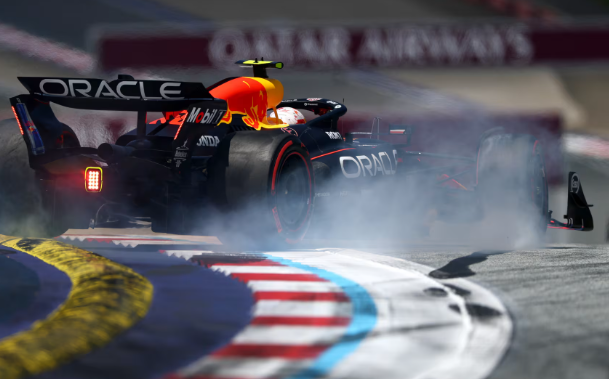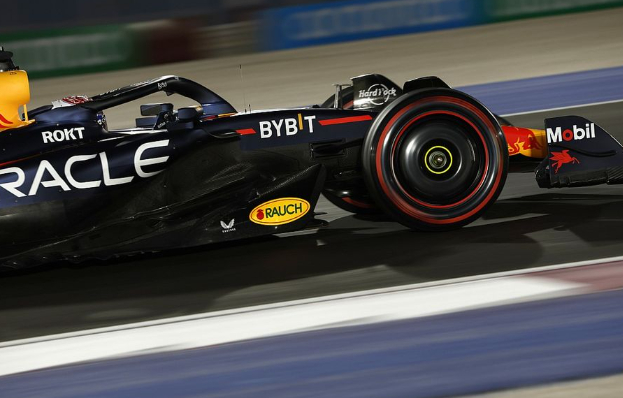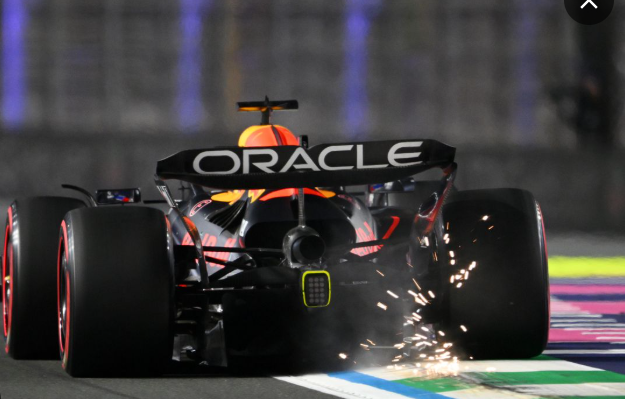Formula 1 qualifying sessions are some of the most thrilling and strategic. F1 Qualifying: The Art of Speed and Strategy. While Sunday’s Grand Prix ultimately determines the winner, qualifying day often sets the stage for everything that follows. Fans may think of F1 Qualifying as a simple contest to see who can set the fastest lap time, but in reality, it’s an elaborate dance of preparation, timing, and psychological warfare. This post will break down what makes F1 qualifying so compelling, why it matters so much, and how teams and drivers approach this crucial aspect of the race weekend.

Table of Contents
The Structure of F1 Qualifying
Modern Formula 1 qualifying is divided into three segments: Q1, Q2, and Q3. Each session whittles down the field to ensure the most competitive drivers fight for pole position in the final minutes.

Q1: All 20 cars take to the track for 18 minutes. At the end, the slowest five drivers are eliminated and will start the race from positions 16 to 20, determined by their best lap times in that session.
Q2: The remaining 15 cars get 15 minutes to record their quickest laps. Again, the slowest five are knocked out, securing grid slots 11 to 15.
Q3: The top 10 drivers have 12 minutes to battle for pole. The fastest driver earns the coveted front spot on the grid.
This elimination format, introduced in 2006 and refined over time, was designed to keep the spectacle alive across all three phases, ensuring action for fans and high pressure for teams.
The Importance of Pole Position of F1 Qualifying
Qualifying isn’t just for bragging rights. Securing pole position can be decisive in determining the outcome of a race. Starting first gives a driver:

- A clean run to the first corner.
- The ability to control the pace at lights out.
- Less risk of getting tangled up in midfield chaos.
Statistically, pole sitters have a significant advantage. On circuits like Monaco, where overtaking is nearly impossible, qualifying often all but determines the winner. Even at more forgiving tracks, leading into turn one allows drivers to manage tire degradation and dictate strategy.
The Psychology of F1 Qualifying
There is a unique intensity to qualifying. Unlike a race, where drivers have laps to recover from mistakes, qualifying is about pure performance in a single moment. The margins between success and disappointment can be infinitesimal—often thousandths of a second.
Drivers speak often about entering a “flow state.” Their focus sharpens to a razor’s edge, every detail of car balance, tire temperature, and track grip committed to instinct. The sense of risk is amplified: if you over drive by even the smallest margin, you might lock up, run wide, or damage the car.
This pressure sometimes leads to legendary performances—think Ayrton Senna’s Monaco laps or Lewis Hamilton finding time nobody else could imagine in wet conditions. These moments define reputations and careers.
Tire Strategy: The Hidden Game of F1 Qualifying
One of the least appreciated aspects of qualifying is tire selection. Teams work to maximize grip and minimize wear, tailoring tire use to each qualifying phase:
- Soft compounds offer peak grip and the fastest lap times but degrade quickly.
- Medium or hard tires may be used in Q1 by teams confident they’ll advance, preserving softs for later.
In previous seasons, the rule required drivers who reached Q3 to start the race on the tires they used to set their best Q2 lap. That forced a delicate balance: choose softer rubber to guarantee a place in Q3 or opt for harder tires to give yourself a strategic edge on Sunday. Although this rule has since been revised, tire management remains a vital thread in qualifying.
Track Evolution and Timing
Another critical factor is “track evolution.” Over a qualifying session, rubber builds up on the racing line, increasing grip. Temperatures also fluctuate. A lap set early in Q1 may be multiple tenths slower than one set in the closing seconds, even by the same driver.
This dynamic creates tension and requires perfect timing. Teams watch data feeds to decide when to send their drivers out. If you wait too long, a yellow flag or sudden rain could scupper the lap. If you go too early, the track might be too “green,” and you waste a set of tires. Sometimes, entire weekends turn on these split-second decisions.
Fuel Loads and Car Weight
Qualifying setups differ from race setups in one crucial way: fuel load. In qualifying, cars run with minimal fuel to maximize speed. Every kilogram of fuel costs around 0.03 to 0.04 seconds per lap. Teams measure fuel down to the liter to optimize the balance between lightness and ensuring enough to complete an in-lap and provide the required fuel sample for the FIA.
In the V8 and V10 eras, cars used “qualifying engines” and “qualifying fuel,” extracting every ounce of performance. While regulations have since tightened, engineers still use engine modes that produce maximum power during qualifying, often referred to as “party mode.” This mode allows the power unit to deploy energy more aggressively, sometimes boosting output by 40-50 horsepower.
Technical Scrutiny
Post-qualifying, cars undergo scrutineering. Officials check ride height, wing flex, bodywork legality, and the minimum weight limit. Infractions can lead to disqualification from qualifying results, pushing a driver to the back of the grid. Technical precision is thus as vital as outright speed.
The Role of the Weather
Weather adds another dimension. A rain-affected qualifying can jumble the grid entirely. Teams scramble to get a banker lap in before the conditions deteriorate, while some gamble on a drying track at the end of the session. Drivers who excel in wet conditions—like Senna, Schumacher, and Hamilton—have used rain to transform their starting position and cement their reputations as rain masters.
The Team Behind the Driver
While the spotlight often shines on the driver, qualifying is also a triumph of teamwork. Race engineers, strategists, mechanics, and data analysts work together to:
- Perfect the setup for each phase.
- Monitor rivals’ sectors and tire choices.
- Ensure the driver exits the garage at the optimal time.
- Deliver precise radio communication without distracting the driver.
In those final minutes, every fraction of a second counts, and a single miscalculation can ruin the session.
The Human Element: Nerves and Glory
For drivers, qualifying is the hour when their skill is most exposed. There are no pit stops, no safety cars—just a raw battle with the stopwatch. The lap they deliver becomes their statement of intent, a declaration to the world that they can find something extra when it matters.
Pole positions are often cherished as much as victories. They symbolize technical mastery, perfect preparation, and a driver’s confidence. Some drivers build entire legacies on their qualifying prowess—few have ever matched Senna’s record of 65 poles in fewer than 200 Grands Prix.
Iconic Qualifying Moments
History is rich with unforgettable qualifying heroics:
- Ayrton Senna, Monaco 1988: Senna was nearly 1.5 seconds faster than teammate Alain Prost. He later described the lap as a near out-of-body experience.
- Lewis Hamilton, Singapore 2018: Hamilton set a pole lap many consider the greatest of the hybrid era, extracting performance no one else could replicate.
- Michael Schumacher, Suzuka 2000: Under immense title pressure, Schumacher delivered a flawless lap to secure pole, paving the way for his first Ferrari championship.
These performances resonate because they showcase drivers at their absolute limit, with no margin for error.
The Modern Era: Data and Margins
Today, qualifying is as much about data science as driving. Engineers pore over telemetry, wind tunnel simulations, and tire models to fine-tune the perfect lap. Drivers study every corner, seeking incremental gains.
Yet, for all the technology, the human factor remains decisive. The ability to brake 2 meters later, rotate the car an instant sooner, or find an extra half-kilometer per hour on exit—these details separate champions from also-rans.
Why Fans Love F1 Qualifying
For fans, qualifying offers a unique spectacle:
- Raw speed: the cars run in their lightest, most aggressive configuration.
- Drama: every lap has consequences.
- Transparency: no pit stop strategy to obscure performance.
- Clarity: the fastest driver, in that moment, gets pole.
It’s a pure showcase of what makes Formula 1 the pinnacle of motorsport.
Conclusion
Formula 1 qualifying is far more than an hour of lap times. It’s an orchestration of engineering brilliance, mental resilience, and raw courage. From perfecting car setup to timing a final run to fractions of a second, qualifying captures the very essence of Formula 1: relentless pursuit of perfection. Whether under the blazing sun of Monza or the rain clouds of Spa, qualifying remains the arena where legends are born, reputations are cemented, and the fastest drivers in the world show exactly why they are at the top.
So the next time you watch a qualifying session, look past the clock. See the preparation, the risk, and the artistry that define those precious minutes. Because in Formula 1, qualifying isn’t just the prelude to the race—it’s a championship of its own.

